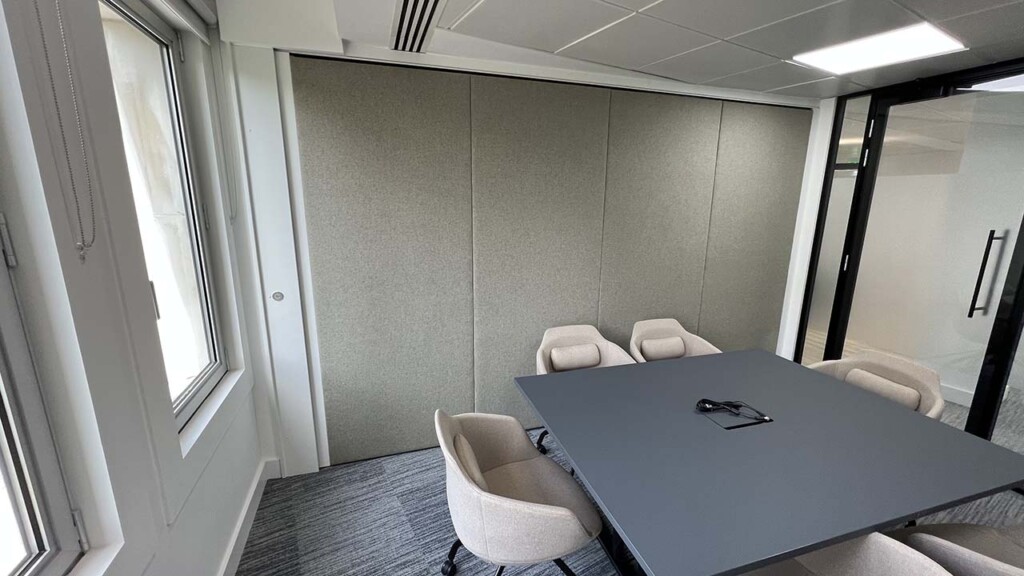5 Ways Workspace Designers Can Create Effective Acoustic Schemes with Acoustic Wall Panels, Ceiling Baffles, and Ceiling Rafts
5 Ways Workspace Designers Can Create Effective Acoustic Schemes with Acoustic Wall Panels, Ceiling Baffles, and Ceiling Rafts
Creating a comfortable, productive workspace requires more than just ergonomic furniture and an attractive colour scheme. One crucial aspect that often goes unnoticed is acoustics. In this comprehensive blog post, we’ll explore the top 5 ways workspace designers can create effective acoustic schemes using acoustic wall panels, ceiling baffles, and ceiling rafts. We’ll also share key techniques and guidelines, along with some of our unique insights and examples of successful designs. Let’s dive in!
1. Assess the Space and Identify Acoustic Challenges
Before diving into design solutions, it’s essential to assess the space and identify potential acoustic challenges. Consider factors like room size, shape, materials used, and the activities that will take place in the various areas of the workspace. Where is the source of the sound? What medium is creating the sound? What surfaces are there (or potentially will be) in these areas that are compounding the acoustic issues. This assessment will help you pinpoint areas where sound may bounce, echo, or become muffled, allowing you to address these issues effectively.

2. Choose the Right Acoustic Solutions for The Space
There is a multitude of acoustic solutions available today, each with their own benefits and ideal use cases. Understanding the best options can be overwhelming and often the best way to create the best outcomes is to discuss with an acoustic expert. But to help debug the basics, below are some explanations:
Acoustic wall panels are perfect for covering large surfaces and reducing reverberation by soaking up sound that hits perimeter walls. Note – when a cavity is created behind the wall panels, their absorpion capabilities inctrease significantly due to their ability to contain sound in the cavity and also ensuring the reverse side of the panels becomes effective in absorbing sound too.

Vertically suspended panels (called baffles) work well in open spaces – the voids between the baffles contain sound waves and both baffle sides are then able to soak up the sound, ensuring it does not return into the space.

Ceiling rafts (horizontally suspended panels) are the most cost-effective way of soaking up sound as they can cover large areas effectively. Their sound absorbency capability is increased somewhat when rafts are layered/overlapped – creating voids and apertures between them assists in containing the sound waves. The upper side of the rafts also is great for absorbency – sound bounces above them between the soffit and the rafts’ upper side, making them acoustically efficient and effective.

A key design technique when designing in acoustic wall panels, rafts and baffles is to place these products as close to the source of the sound as possible – that way they have far more chance of soaking up the sound waves before the noise travels too far.
3. Combine Different Acoustic Solutions for Maximum Effect
A combination of acoustic wall panels, ceiling baffles, and ceiling rafts can create a harmonious acoustic environment. A good mix of absorption, blocking and covering create the best outcomes because where one medium may not be as effective as another, the other mediums can compensate.
This multi-layered approach ensures that all aspects of noise behaviour are covered, creating a balanced and comfortable soundscape.
4. Consider Aesthetics Alongside Functionality
While the primary goal is to improve acoustics, it’s essential to consider aesthetics as well. Acoustic solutions can be both functional and visually appealing, contributing to the overall design of the space. For instance, acoustic products can be customised with various colours, textures, patterns and shapes to align with your design vision.
5. Learn from Past Successes
There are a multitude of examples of successful acoustic designs that can serve as inspiration for your project. On our Projects page and on our YouTube channel we have many case studies showcasing acoustic design at its best.
Conclusion: Create Your Perfect Acoustic Environment
By following these guidelines and incorporating acoustic wall panels, ceiling baffles, and ceiling rafts into your workspace designs, you will create environments that are not only visually appealing but also acoustically comfortable and conducive to wellness and productivity. With the right combination of solutions and a keen eye for design, you can transform any space into an acoustic oasis.
Visit our website to learn more about the products that will deliver these solutions and bring harmony to your workspace designs.